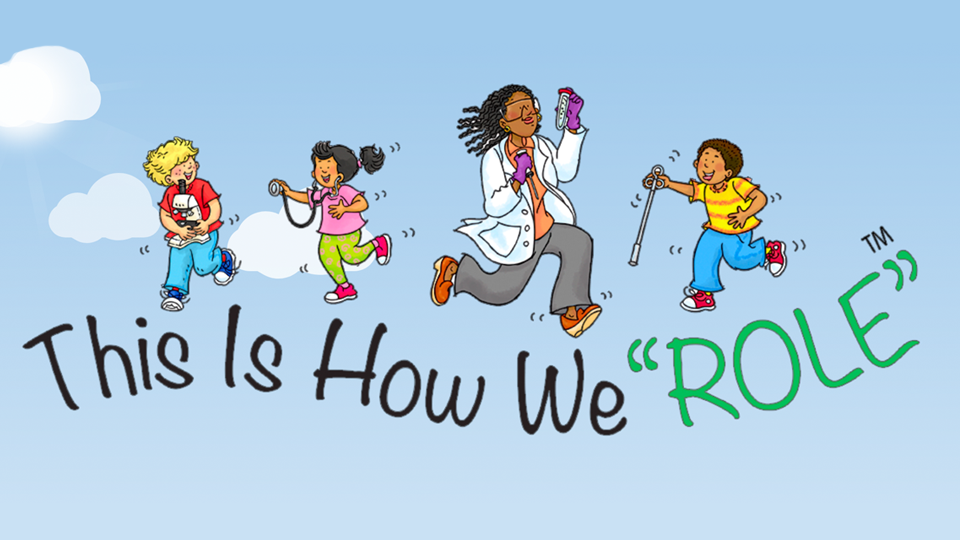This Is How We “Role”: Inspiring future researchers through veterinary medicine
 Website and Resources © Purdue University College of Veterinary Medicine.
Website and Resources © Purdue University College of Veterinary Medicine.
Project Website(s)
-
Project Description
This Is How We “Role” is a program for kids in grades K–4 who are educationally disadvantaged due to socioeconomic status, race, or ethnicity, with the long-term goal of diversifying the veterinarian-scientist workforce. Veterinarians and veterinary students help kids learn about the breadth of careers in the veterinary profession and how we can prevent and treat health conditions that impact both people and their animals. Our intent is nationwide distribution of This is How We “Role” programs through U.S. colleges/schools of veterinary medicine through this grant program.
Program Expansion
The program has expanded beyond Purdue University to additional regions of the country. Collaborators include Colorado State University College of Veterinary Medicine and Biomedical Sciences, Cummings School of Veterinary Medicine at Tufts University, Lincoln Memorial University College of Veterinary Medicine, and Michigan State University College of Veterinary Medicine.Purdue’s CVM and Evaluation and Learning Research Center are providing collaborators with online professional development training for delivering the program in a culturally responsive, age-appropriate manner. Lesson materials include instructions, handouts and activity sheets, as well as tools for assessing the program’s impact both on the students and veterinary student role models.
-
Abstract
The lack of diversity in the clinician-scientist workforce is a “very serious concern to the NIH” and to health care professions. Current efforts to broaden participation in STEM fields typically target high school and college-age students. Yet, history and national trends suggest that these efforts alone will not result in rapid or significant change because racial and ethnic disparities are already evident by this time. Children are forming career preferences as early as elementary school, a time when they have little exposure to science and STEM career options.
The overall vision of this team is to meet the nation’s workforce goal of developing a diverse, clinician-scientist workforce while meeting the nation’s STEM goals. As a step toward this vision, the goal of This Is How We “Role” is to inspire elementary school students towards careers as clinician-scientists by increasing the number of K–4 students with authentic STEM experiences. This goal will be attained through two specific aims.
Aim 1 is to distribute and evaluate a K–4 after-school program across the diverse geographic regions of the US, to support the development of a robust and diverse clinician-scientist workforce.
Aim 2 is focused on developing the community resources (afterschool program curriculum, informational books and online certificate program) for promoting health science literacy and encouraging careers in biomedical and clinical research for K–4 students from underserved and underrepresented communities. Combined, these aims will enhance opportunities for young children from underserved communities to have authentic STEM experiences by providing culturally responsive, after-school educational programs which will be delivered by university student and clinician-scientist role models who are diverse in gender, race, and ethnicity.
Books and an online certificate program about health issues impacting people and their animals (i.e., diabetes, tooth decay) will be developed and distributed to children unable to attend after-school programs. Further, by engaging veterinary programs and students from across the US, along with practicing veterinarians, this program will examine whether the approaches and curriculum developed are effective across the diverse communities and geographic regions that span the country.
Elementary school teachers will serve as consultants to ensure that educational materials are consistent with Next Generation Science Standards, and will assist in training university students and clinician-scientists to better communicate the societal impact of their work to the public.
The program will continue to use the successful model of engaging elementary school students in STEM activities by using examples of health conditions that impact both people and their animals. Ultimately, this project will educate, improve the health of, and attract a diverse pool of elementary school students, particularly those from underserved communities, to careers as clinician-scientists.
-
Dissemination Strategies
Dissemination strategies include the following.
- Establishing a student-delivered role modeling program at Purdue University College of Veterinary Medicine and at least 15 other colleges of veterinary medicine
- Live and online professional development workshops for role models
- An online health science literacy certificate program
- Books
- Program website
- Collaborations with other SEPA programs
- Publications in scientific journals
- Presentations at scientific meetings
-
Project Evaluation(s)
The Discovery Learning Research Center at Purdue’s Discovery Park will serve as the external project evaluator and will develop a comprehensive evaluation plan to assess the outcomes and impacts.
Assessments will focus on changes in the children’s attitudes toward veterinarian scientists and knowledge of veterinary science, as well as their perceptions of themselves and their capability to achieve success.
-
Additional Information
Publications
San Miguel S.F., Wackerly A.J., Veatch J.H., Ruhl J.D., Mennonno A.M.
Tips for providing P-12 students career day-type presentations about the veterinary profession.
J Am Vet Med Assoc 2015; 246(6):616-620. PMCID: PMC4507264
Project Audience
Children in grades K–4, from underserved communities, who are participating in afterschool programming.
Subjects Addressed
Clinician-scientist careers in veterinary medicine. Health conditions that impact both people and their animals.







